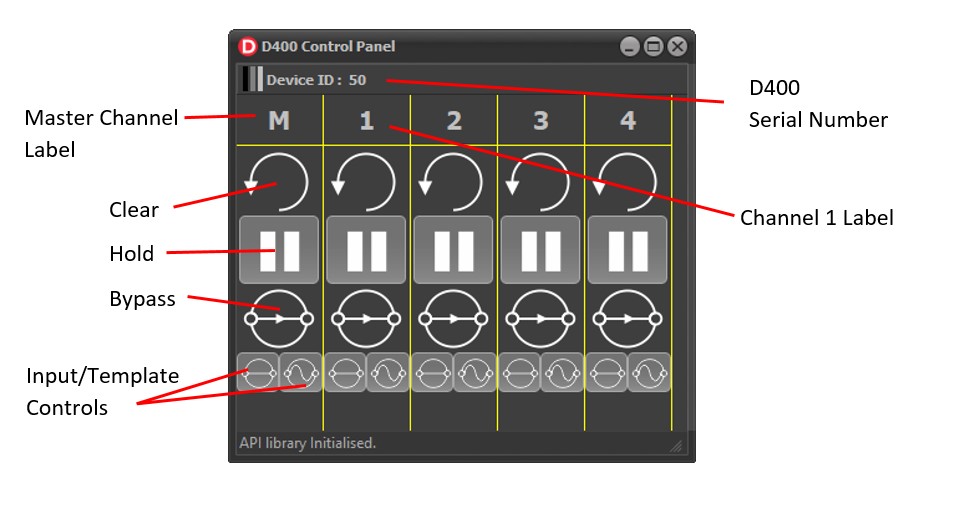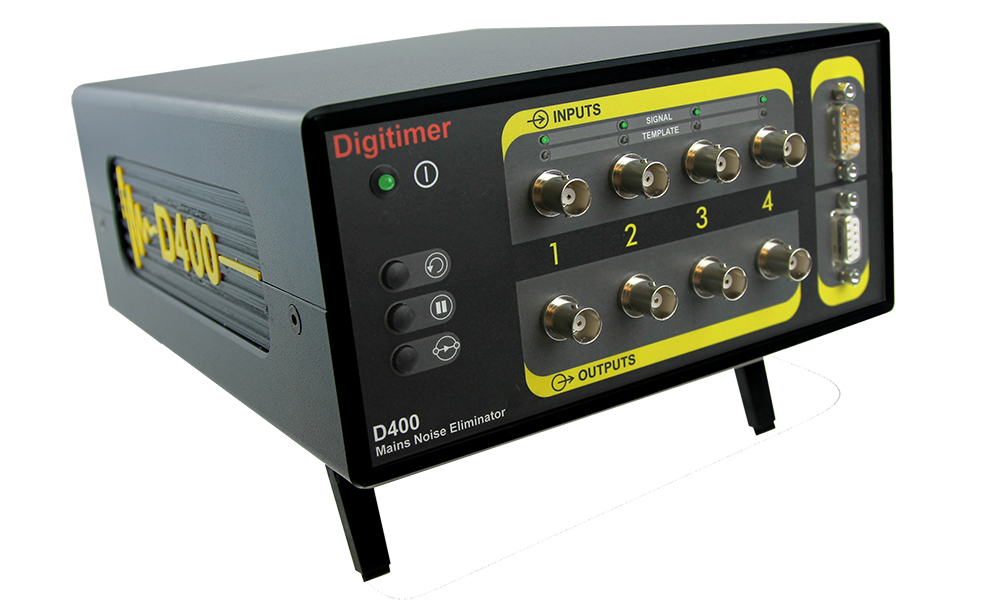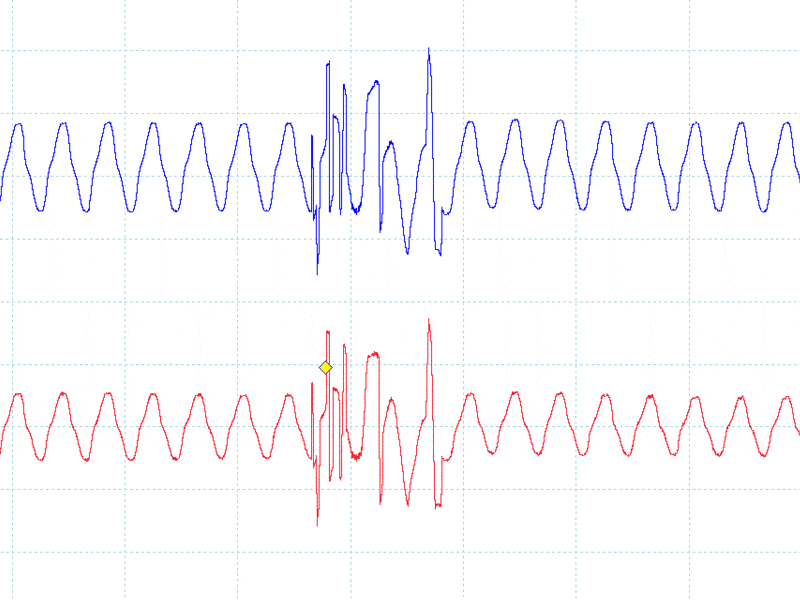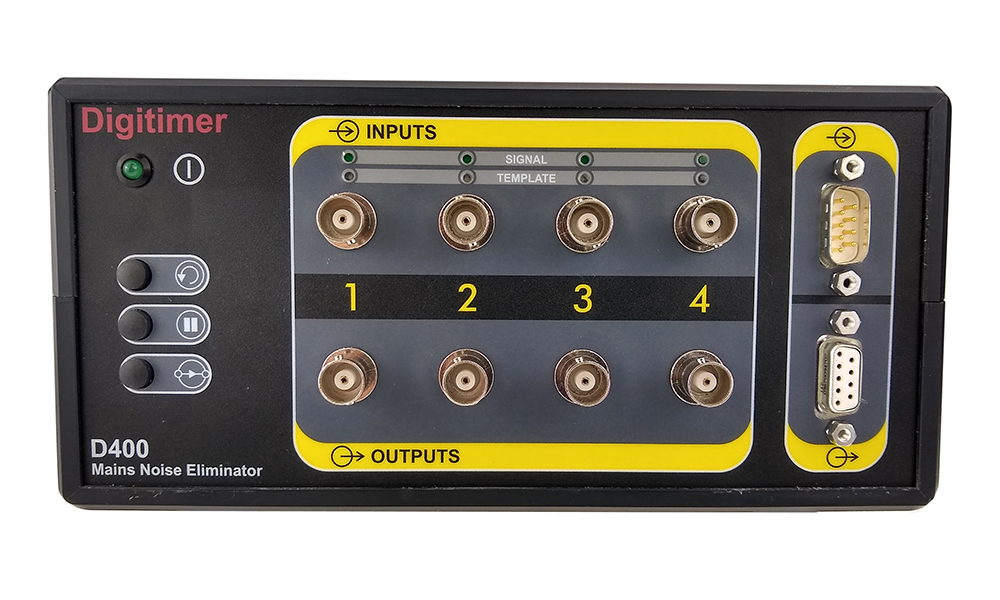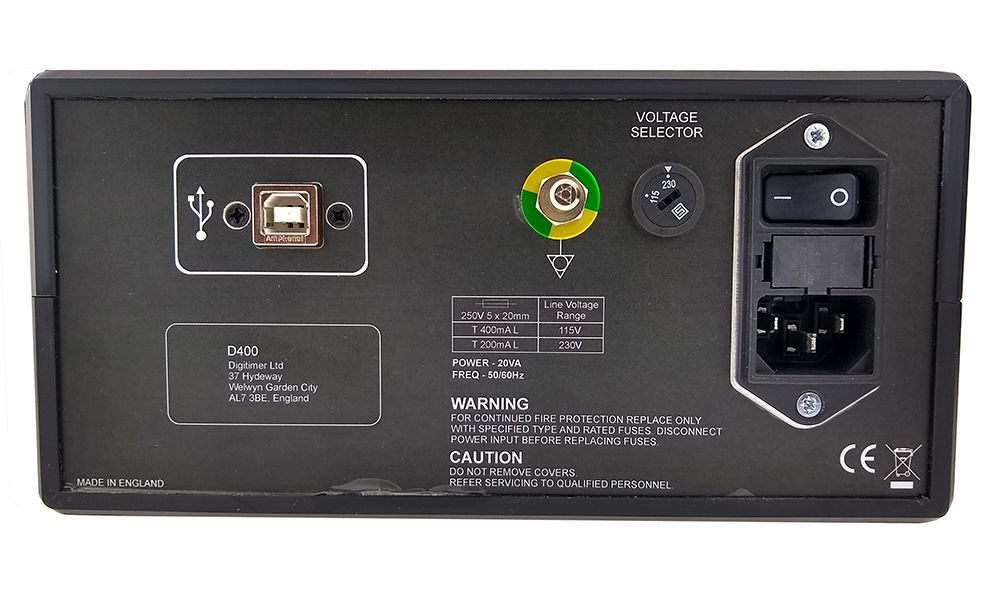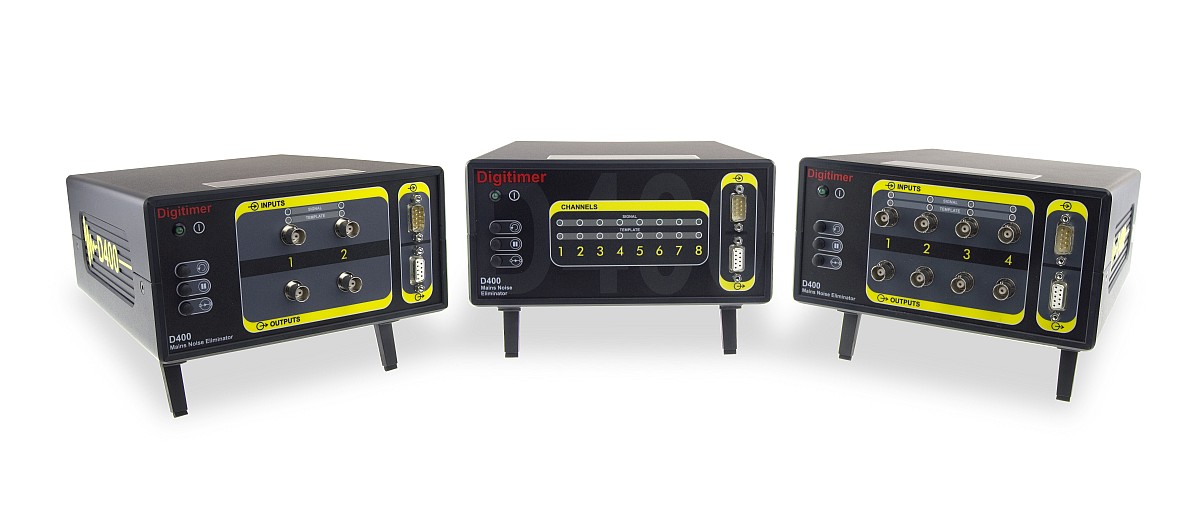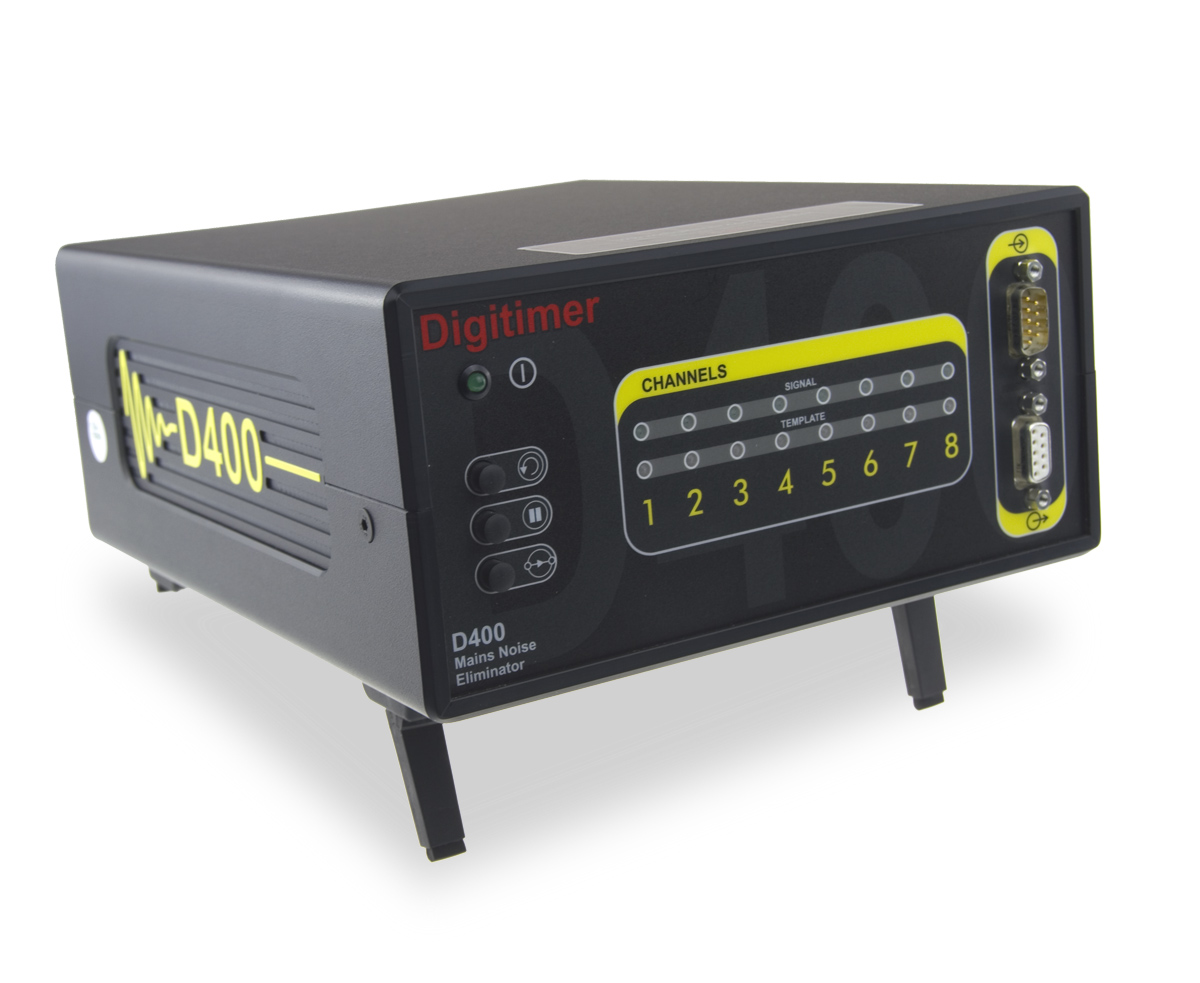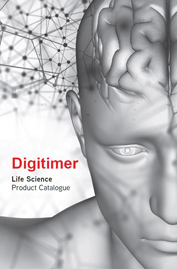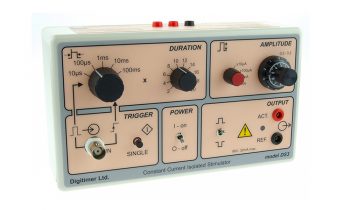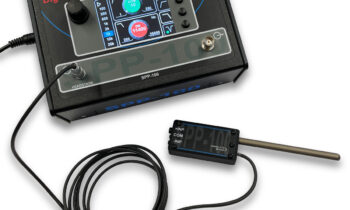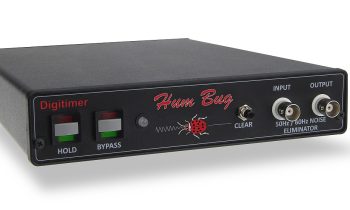Description
DESCRIPTION
The NEW D400 Multi-channel 50Hz/60Hz Mains Noise Eliminator is a standalone instrument designed for real-time removal of 50Hz or 60Hz mains noise interference, including harmonics, from amplified biological and other signals prior to acquisition by digital data recording systems. Unlike 50Hz/60Hz notch filters, the D400 noise eliminator can remove mains noise without degrading the signal of interest, even if it overlaps with the mains frequency.
Rapidly evolving multi-channel mains noise removal
The D400 is unique as a multi-channel, standalone mains noise eliminator, which is not incoporated within and does not have to be used in conjunction with any specific electrophysiology data acquisition system. While the method of noise removal follows the principles of other single channel devices, such as the Humbug Noise Eliminator, the hardware and software algorithms used by the D400 have been developed wholly by Digitimer and are unique to this device. For those unfamiliar with the concept of operation, the D400 receives amplified analogue voltage signals (AC or DC coupled) from an amplifier via its inputs and as these signals pass through the D400 noise eliminator remaining in the analogue domain, it rapidly constructs a phase-locked “mains noise template” and subtracts this from the original signal. Noise removal occurs in real-time and the noise template evolves constantly, so that any changes in the amplitude or other characteristics of the noise are corrected for.
Analogue signal path with zero distortion
Importantly, the signal pathway through the D400 is analogue throughout i.e. the input signals are not digitised at any point, thus preserving data integrity. Not only does the D400 remove mains noise in the 50Hz to 60Hz frequency, but it is also effective at removing associated harmonics of these frequencies. Importantly, and unlike standard mains Notch filters, this method of noise removal is not detrimental to signals of interest within the 50-60Hz frequency range. The video below provides a demonstration of the power of the D400 when used to remove mains noise from a cortical brain slice extracellular recording, which contained oscillatory activity in the gamma frequency range.
Intuitive connection and control
The D400 is designed for ease of use and has very few controls. On the left of the front panel are three push buttons for Clear, Hold and Bypass, described below. To the right of these are multiple pairs of signal input and output connectors, as well as equivalent “D” connectors for all channels. Associated with the individual signal connectors are several LED indicators, which show the status of each channel.
CLEAR – A single press erases the existing noise template and the D400 begins to construct a new one. When this button is pressed, any mains noise present in the signal will re-appear and gradually decrease in amplitude as a new template is constructed
HOLD – This freezes the template so it no longer evolves with changes in the noise level. This may be useful in situations where the user needs to adjust some recording equipment and expects to transiently introduce noise. HOLD can be pressed again once the interruption has taken place, causing minimal disruption to the noise removal process. While the D400 is in the “Hold” mode, the Template LED’s turn RED.
BYPASS – This allows the user to see what the raw signal passing through the D400 looks like without any noise cancellation. When the D400 is in “Bypass” mode, the Template LED’s are extinguished.
All three front panel buttons apply their actions globally (i.e. to all channels).
Standalone or software control
The D400 is a standalone device and does not need any software, however, our Control Panel replicates the three physical front panel buttons on the D400 and also provides the following additional features:-
- Individual control of the Clear, Hold and Bypass functions for each channel.
- Ability to toggle the input signal on and off, allowing the noise template to be visualised in isolation from the signal of interest.
GALLERY
FAQS
The Digitimer D400 is NOT a mains noise filter, making this the main reason it is a special, and unique as a standalone multi-channel device. Filtering often results in phase shifts, frequency loss, amplitude errors, DC shifts, time delays or digital distortion, but the D400 will eliminate 50/60Hz electrical interference (and harmonics) without altering your signal of interest.
No, absolutely not. This is one of the key features of active noise cancellation devices, in that they syncronise with the local mains frequency whether it is 50Hz or 60Hz and will ignore components of the input waveform even if they overlap with these mains frequencies. As a result, many researchers interested in signals within the gamma band will opt for devices like the D400.
The D400 adapts rapidly when the input signal is dominated by noise and proceeds more slowly when low amplitude noise is embedded within continuous physiological activity. Adaptation is also slower for harmonics with frequencies greater than 1kHz.
No, the D400 has a distinct noise template for each channel. This means that it is theoretically possible to share one D400 across more than one electrophysiology rig, although there may be issues when any of the function buttons need to be used, as their actions are applied globally to all channels.
The obvious benefit is that the user can control the D400 without having to look away from or move from their computer screen when using the clear, hold or bypass controls. However, the other advantage is that individual channels can be controlled separately from the software. This may be of use in a rig that has 4 parallel brain slice recordings and the operator only wants to make adjustments to one of them, without affecting the other electrophysiological recordings.
The D400 software also allows the user to visualise the noise template rather than the cleaned output signal, in order to verify exactly what is being subtracted from the amplified signal of interest.
The Windows GUI is intended to be used in situations where the user cannot reach the D400 front panel or if they want to control the D400 on a per channel basis. If preferred, the D400 can be used as a standalone device without the USB connection or software control.

